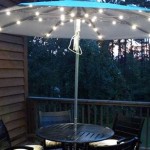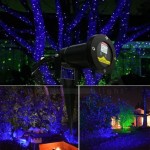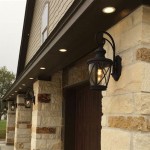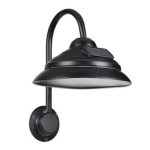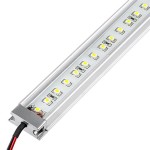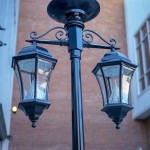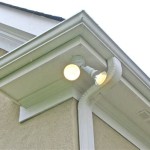Best Outdoor Lighting Fixtures for Enhancing Your Landscape and Security
Outdoor lighting is an essential element of any property, serving both functional and aesthetic purposes. Strategically placed and well-chosen outdoor lighting fixtures enhance curb appeal, improve security, and extend the usability of outdoor spaces long after sunset. Selecting the "best" outdoor lighting fixtures, however, is not a one-size-fits-all endeavor and depends heavily on individual needs, architectural style, and the intended use of the landscape. This article explores various types of outdoor lighting fixtures, highlighting their strengths, weaknesses, and ideal applications to help guide informed purchasing decisions.
The initial consideration when selecting outdoor lighting fixtures should be the overall purpose. Are you primarily concerned with security, pathway illumination, highlighting architectural features, or creating an inviting ambiance for outdoor entertaining? Understanding the primary goal will narrow the field significantly, allowing for a more targeted approach to fixture selection.
Security Lighting Considerations
Security lighting focuses on deterring potential intruders and improving visibility around the perimeter of a property. Brightness and coverage are key factors in effective security lighting. Motion-activated lights are a popular choice, as they only illuminate when movement is detected, conserving energy and drawing attention to potential threats. Typical motion-activated security lights utilize LED technology for energy efficiency and long lifespan. Placement is critical; mounting these lights above doors and windows, along pathways, and near vulnerable areas such as garages and sheds provides maximum protection. Consider the sensitivity and range of the motion sensor to avoid triggering the light by small animals or distant movement.
Floodlights are a traditional option for security lighting, providing broad illumination across a large area. While effective, floodlights can also be a nuisance to neighbors if poorly aimed or overly bright. Choose models with adjustable heads to direct the light downward and avoid light pollution. Dark sky compliant fixtures, which shield the light source and prevent upward light spill, are an environmentally conscious choice that minimizes light pollution and enhances stargazing opportunities.
Dusk-to-dawn lights, also known as photocell lights, automatically turn on at dusk and off at dawn, providing continuous illumination throughout the night. These are particularly useful for illuminating areas that require constant visibility, such as driveways or entryways. Consider energy-efficient LED dusk-to-dawn lights to minimize electricity consumption. A timer override feature can be beneficial to disable the light during specific periods, such as when hosting an outdoor event.
Beyond the fixtures themselves, consider the color temperature of the light. Cooler, bluer light is often perceived as brighter and more alerting, making it well-suited for security applications. However, overly harsh blue light can be jarring and uncomfortable. A color temperature between 3000K and 4000K provides a good balance between brightness and visual comfort.
Pathway and Landscape Lighting
Pathway lighting serves both a functional and aesthetic purpose, guiding foot traffic safely through the landscape while enhancing its visual appeal after dark. The goal is to provide sufficient illumination to prevent tripping hazards without creating excessive glare or detracting from the overall ambiance. Low-voltage landscape lighting is a popular choice for pathway illumination due to its ease of installation and energy efficiency.
Path lights are typically small, ground-mounted fixtures that direct light downwards onto the pathway. Choose path lights that are durable and weather-resistant, as they will be exposed to the elements. Copper, brass, and powder-coated aluminum are popular materials that offer good corrosion resistance. Consider the height of the path lights; taller fixtures provide wider coverage but can be more visually obtrusive. Shorter fixtures blend into the landscape better but may require more fixtures to achieve adequate illumination.
Uplighting, also known as spotlighting, is used to highlight specific features of the landscape, such as trees, shrubs, or architectural details. Properly placed uplights can create dramatic shadows and textures, adding depth and visual interest to the outdoor space. Well lights are recessed fixtures installed in the ground that shine upwards, providing a discreet and effective way to uplight landscape features. Adjustable well lights allow for precise aiming of the light beam, ensuring optimal highlighting of the desired object.
Downlighting, the opposite of uplighting, involves mounting fixtures high up in trees or on structures and directing the light downwards. Downlighting can mimic moonlight, creating a soft and natural ambiance. Moonlighting, a specific type of downlighting, involves using multiple fixtures with narrow beam angles to create dappled patterns of light and shadow on the ground. This technique can be particularly effective in wooded areas or near water features.
String lights, also known as fairy lights or bistro lights, are a versatile and decorative option for adding ambiance to outdoor spaces. String lights can be draped across patios, decks, or trees, creating a festive and inviting atmosphere. LED string lights are energy-efficient and available in a wide range of colors and styles. Choose string lights that are specifically designed for outdoor use and are weatherproof to withstand rain and wind.
When planning landscape lighting, consider the overall composition and balance of light and shadow. Avoid creating overly bright or monotonous lighting schemes. Instead, strive for a layered approach, combining pathway lighting, uplighting, and downlighting to create a visually interesting and inviting outdoor space. The color temperature of the lights should also be consistent throughout the landscape to maintain a cohesive look. Warmer color temperatures (2700K to 3000K) are generally preferred for creating a cozy and inviting ambiance, while cooler color temperatures (4000K to 5000K) can be used to highlight specific features or create a more modern aesthetic.
Fixture Materials and Durability
The longevity and performance of outdoor lighting fixtures depend heavily on the quality of the materials used in their construction. Outdoor fixtures are constantly exposed to the elements, including rain, sun, wind, and temperature fluctuations. Choosing durable and weather-resistant materials is essential for ensuring that the fixtures will withstand these conditions and provide reliable performance for years to come.
Copper is a popular material for outdoor lighting fixtures due to its natural beauty, durability, and resistance to corrosion. Copper fixtures develop a distinctive patina over time, adding character and visual appeal to the landscape. Brass is another excellent choice for outdoor lighting fixtures, offering similar benefits to copper but with a different aesthetic. Brass fixtures are strong, durable, and resistant to corrosion, making them well-suited for harsh outdoor environments.
Stainless steel is a modern and durable material that is often used in contemporary outdoor lighting designs. Stainless steel fixtures are resistant to rust and corrosion, making them a good choice for coastal areas or other environments with high humidity. Powder-coated aluminum is a lightweight and versatile material that is often used in a wide range of outdoor lighting fixtures. The powder coating provides a durable and weather-resistant finish that protects the aluminum from corrosion. Aluminum fixtures are also relatively inexpensive compared to copper, brass, or stainless steel.
Composite materials, such as fiberglass or resin, are increasingly being used in outdoor lighting fixtures. These materials are lightweight, durable, and resistant to rot, insects, and moisture. Composite fixtures are also available in a wide range of colors and styles, making them a versatile option for various landscape designs. Before purchase confirm that the composite materials are UV stabilized so as not to fade or become brittle over extended exposure to ultraviolet light.
Beyond the primary body of the fixture, consider the quality of the lens or diffuser. Polycarbonate lenses are durable and impact-resistant, while glass lenses offer superior clarity and light transmission. Tempered glass lenses are particularly strong and can withstand high temperatures. Look for fixtures with sealed lenses to prevent water and dust from entering the housing, which can damage the light source and reduce its lifespan.
Finally, consider the Ingress Protection (IP) rating of the fixture. The IP rating indicates the level of protection that the fixture provides against solid objects and liquids. For outdoor lighting fixtures, an IP rating of IP65 or higher is recommended to ensure that the fixture is adequately protected from dust and water ingress. The first number in the IP rating refers to protection against solid objects, while the second number refers to protection against liquids. An IP65 rating, for example, indicates that the fixture is dust-tight and protected against water jets from any direction.

The Best Outdoor Lighting Ideas In 2024

The 3 Best Smart Outdoor Lights For Backyards Of 2024 Reviews By Wirecutter

5 Outdoor Lighting Styles And Ideas Design Inspirations Lights Com Blog

Outdoor Lighting Guide Lowe S

19 Stylish Outdoor Lighting Ideas The Best Patio

The Best Outdoor Lighting Fixtures For Your Garden Lightbulb Co

The Best Outdoor Lighting For Your Home

Outdoor Lighting Guide The Home Depot

Stylish Affordable Exterior Light Fixtures Life On Virginia Street

Choose Outdoor Lighting Fixtures American Gas Lamp Works
